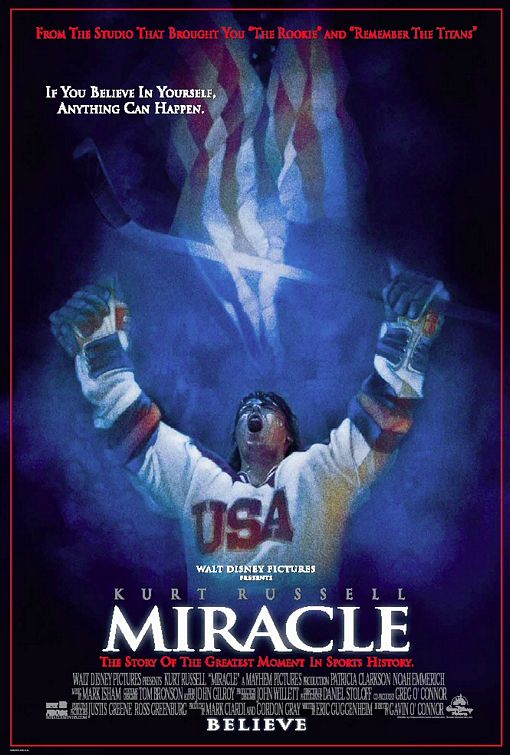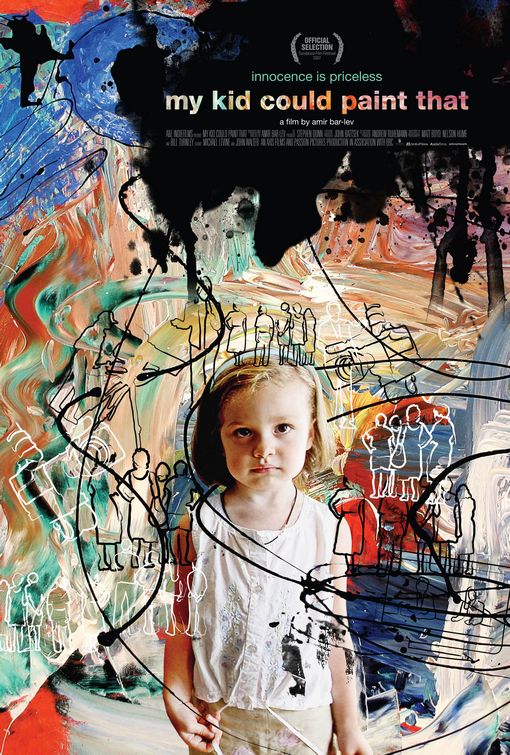“Art Scam?”

| None | Light | Moderate | Heavy | |
|---|---|---|---|---|
| Language | ||||
| Violence | ||||
| Sex | ||||
| Nudity |
What You Need To Know:
This is a fascinating documentary that probes some important contemporary questions. The movie even asks, “What is truth?” And, it states that there is truth. MY KID COULD PAINT THAT is a lesson in media wisdom, but it includes a few “f” words and brief sexual images in modern art pieces.
Content:
(B, FR, Pa, C, HH, L, S, NN, A, D,M) Light moral worldview with a modern deconstructionist sensibility, some false religious, New Age references, some positive Christian references, some strong humanist perspectives; five obscenities with a strong use of the “f” word in an example of the confrontational nature of Modern Art, with one art neon sign that goes from the “f” word to you and one big giant fist with its middle finger raised; no violence; brief sexual images in modern art but no sex scenes; little child nudity in bathtub but nothing revealed but upper female nudity in modern art photo collages; brief drinking; brief smoking; and, a focus on what is truth, who is lying and where does marketing become manipulation.
More Detail:
Mark Olmstead works at a Frito Lay plant. His wife, Laura, is an assistant at a medical office in a small town. Their daughter Marla seems to be painting some incredible abstract modern art. When the local reporter talks about 4-year-old Marta’s paintings, the major art critic at the New York Times Michael Kimmelman, picks up the story.
At an exhibition of Marla’s paintings, art connoisseurs buy everything for thousands of dollars. The gallery owner is a realistic painter who has an ax to grind against modern art. The documentary cuts to ABC reporter John Stossel ridiculing modern art and then to a Christie auction where paintings that look a lot like Marla’s are sold for $20 million or so.
Marla becomes the darling of the art world. 60 MINUTES decides to do a segment on her, and interviewer Charlie Rose seems to indicate that Marla is being coached by her father. Laura and Mark let the documentary filmmaker into their lives to set the record straight, but he has his doubts, although he feels that Laura and Mark are the most decent, kind-hearted, real people he’s ever met.
This is a fascinating subject and a fascinating setup to probe some extremely important contemporary questions. Art one point, the movie asks, What is truth? And, the movie makes it clear that there is truth. The movie looks at Laura’s concerns, but then the audience sees her getting swept up in the wealthy game of Marla’s art. The gallery owner may have set this all up to expose the scam of modern art, but once he sees there’s money to be made, he seems to switch sides and by the middle of the movie is vigorously selling Marla’s works. Thus, the movie also ponders the question, at what point does marketing become manipulation?
Once upon a time, Orson Welles did a movie called F FOR FAKE, which asks some of the same questions. This movie almost surpasses the insight and excellence of that award winning film.
Regrettably, one small section of MY KID COULD PAINT THAT talks about the controversial nature of modern art and not only uses the “f” word several times but shows some art that visualizes the same. Thus, the MPAA gave the movie a PG-13 rating. The rest of the movie is very pristine, however, except for the very poignant, profound, important questions. It is a lesson in media wisdom, and a lesson in cultural wisdom. It would even help parents develop better parenting skills. So, we regret that it contains a small amount of offensive material.


 - Content:
- Content: 




